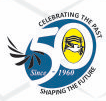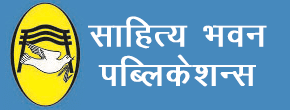प्रस्तुत पुस्तक में बी.ए. गृह विज्ञान सेमेस्टर-V का गृह विज्ञान विषय का पूरा पाठ्यक्रम प्रस्तुत किया गया है | यह पुस्तक उत्तर प्रदेश, उच्च शिक्षा विभाग द्वारा निर्धारित राष्ट्रीय शिक्षा निति 2020 के सामान पाठ्यक्रम अनुसार बनाई गई है, जो उत्तर प्रदेश के समस्त विश्वविद्यालयों एवं उनसे संबंद्ध महाविद्यालयों में लागु होगा |
गृह विज्ञान (Home Science) Syllabus For B.A. Vth Semester of Dr Bhimrao Ambedkar University, Chaudhary Charan Singh University, Dr. Ram Manohar Lohia Avadh University, Mahatma Jyotiba Phule Rohilkhand University, Prof. Rajendra Singh (Rajju Bhaiya) University, Veer Bahadur Singh Purvanchal University
PAPER 1 : SURFACE ORNAMENTATION OF FABRICS (THEORY)
Unit – I : Techniques of Creating variety on fabrics (a) weaving, (b) finishing of fabrics, (c) dyeing of fabrics, (d) printing fabrics (a) embroidery and other decoration methods.
Unit – II : Finishes (a) Classification of fabric finishes, (b) Study of purpose and process of finishes (i) General Purpose finishes-Bleaching, Mercerization, Calandering, Sanforization, Tentering, Singeing, Scouring, (ii) Functional Finishes .
Unit – III : Dyeing -Classification and use of dyes-Natural v/s Synthetic, (Basic, Acidic, Direct, Azoic, Natural, Sulphur, Vat, Disperse and Reactive dyes) Resist Dying Techniques- Tie & Dye, Batik.
Unit – IV : Printing (a) Direct printing- Block, Screen, Stencil, Roller, (b) Transfer printing, (c) Discharge printing, Resist printing, (d) Polychromatic, Inkjet and Digital printing techniques, (e) After treatment of dyed and printed goods.
Unit – V : Traditional Embroideries : Meaning and status of traditional craft India, Knowing about the Traditional Embroideries of different st Zardozi, Kashida of Kashmir, Phulkari of Punjab, Kantha of Beng Chikankari, Kasuti, of UP, Sindh and Kutch work of Gujarat.
Unit – VI : Traditional Textiles : Knowing the Traditional textiles of different states of India (a) Woven fabrics-Baluchars, brocades, Kashmir carpets, Patola, Ikat, Pochampalli, Chanderi (b) Printed, painted and dyed-Sanganeri, Bhagru, Kalamkari, Madhubani, Bandhani.
Unit – VII : Water (a) Water and its uses in textile industry , properties, (b)types of water used for processing (c) Hardness and removal of Hardness of water.
Unit – VIII : Laundry and dry cleaning of fabrics and garments (a) Methods of Laundry and Dry cleaning (b) Dry cleaning process (c) Reagents of Laundry-Blues, Bleaches, Optical Brighteners, Stiffening agents (d) Types of soaps and detergents (e) Cleaning action of soaps and detergents.
PAPER 2 : COMMUNITY DEVELOPMENT & PROGRAMME PLANNING (THEORY)
Unit – I : Community Development : Meaning, Definition, Functions, Objectives, Philosophy, Principles of Community Development Programme in India.
Unit – II : Community Development Organization : Meaning, Types, Principles, Role & Administrative Structure at the National, State, District, Block & Village levels.
Unit – III : Home Science Extension Education in Community Development : Origin, Concept, Need, Importance and Contribution of Home Science Extension Education in National Development.
Unit -IV : Recent Development Programme for Women and Children : Support to Training & Employment for women (STEP), Swarn Jayanti Gram Swarojgar Yogna (SGSY), Integrated Child Development Services (ICDS) etc.
Unit -V : Support Service of Youth Development : NCC, NSS, Youth Camp Youth Clubs etc.
Unit -VI : NGO & Others : Contribution towards community services, Types & Role of NGO – WHO, CARE, UNICEF, UNESCO, UNDP, CRY, HELP-AGE INDIA.
Unit -VII : Leadership : Concept, Definitions, Types, Importance, Function and Role of Community leaders. Methods of Identifying and Training of leaders.
Unit -VIII : Programme Planning : Programme planning component cycle and its components- (i)Designing the project – Defining the objectives, Identifying resources, approach, feasibility and Work plan. (ii) Implementation. (iii) Monitoring and Evaluation.
(PRACTICAL)
PAPER 3 : COMMUNITY TRANSFORMING (CHANGE)
Unit – I : Identify the target group & their relevant issues i.e. poor health, malnutrition, illiteracy, poverty, domestic issues related to women and children. Observe and critical analysis of welfare programme followed by preparation of report.
Unit – II : Stimulation in nearby community for local economy through acquiring skills in surface ornamentation of fabric such as tie and dye, batik, block, stencil printing and spray (any three), Kashida of Kashmir, Phulkari of Punjab,Kantha of Bengal, Chickenkari of Lucknow, kutch work of Gujrat Sindhi stitch, Kasuti of UP and zardozi work (any three).
Unit – III : Prepare & learn the use of Audio-Visual Aids.
Unit – IV : Develop a script in the Folk drama (Nukkad Natak) format to perform in the target group.
PAPER 4 : RESEARCH PROJECT
Unit – I : Survey of community services surrounding living area of candidate. The Candidate has to explore the surroundings and study / identify problem in any one of the following.
It many include Anganwadi/ Health services/ Market / Dairy/ Agricultural farmland / NGO / Crèche/ Nursery School/ Hospital/ Fitness center/ Diet councellor/ Boutique/Balwadi/ Youth center/ Primary school/ Vridha Ashram(old age home)/ Divang school/ Mentally challenged institution/ Village panchayat / School councellor/ Dyeing or printing Unit/ Cottage level embroidery or food processing unit / SHGs/ Bank schemes/ Subsidies
available/ Industry producing consumer goods .
Unit – II : Seek permission to carry the visits, Plan Visits to the area/ site for developing an understanding.
Unit – III : Develop a tool for conducting a survey of the selected area and collect data from the area/ seek permission to conduct short training in the area.
Unit – IV : A detailed Report to be prepared and submitted.




















![समाजशास्त्रीय सिद्धान्त (Sociological Theories) [for H.N.B. Garhwal Unviersity, Srinagar]](https://i0.wp.com/sahityabhawanpublications.com/wp-content/uploads/2017/10/2789-Sociology-Theories.jpg?resize=245%2C300&ssl=1)


![समाजशास्त्र (Sociology) [for H.N.B. Garhwal University]](https://i0.wp.com/sahityabhawanpublications.com/wp-content/uploads/2017/10/2681-Sociology.jpg?resize=245%2C300&ssl=1)
Reviews
There are no reviews yet.